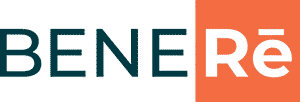Many employees are facing potentially catastrophic medical bills. Here’s how BeneRē is putting the numbers in their favor.
THE CHALLENGE:
Closing the gap between what Americans in rainy day savings and their exposure to medical bills
41%
percent of working-age Americans—or 72 million people—have medical bill problems or are paying off medical debt.
THE OPPORTUNITY:
Offering supplemental coverage with affordable financial protection and transparency
75%
of U.S employees say healthcare plans, including supplemental options, directly influence their level of job satisfaction.
The Solution
A value-focused and transparent supplemental benefits model
10%
Average Employee Cost Savings
20%
Average Dividends To Be Reinvested In Employee Benefits Programs
100%
Employees Receiving Better Plan Designs
10%
Average Employee Cost Savings
20%
Average Dividends To Be Reinvested In Employee Benefits Programs
100%
Employees Receiving Better Plan Designs
What is a group captive insurance company?
It is an insurance company that exclusively reinsures the risks of firms belonging to that group. BeneRē is domiciled in Arizona and is regulated by that state’s Department of Insurance (DOI). They monitor BeneRē’s issuance of policies, collection of premiums, disbursement of claims, financial stability and compliance with all regulatory requirements as with any standard insurance company.
What’s the difference between a Single Parent Captive vs. a Group Captive?
The vast majority of large employers own a Single Parent captive and may wish to write these coverages through their controlled insurance company because of the consistently low loss ratios. However, this would represent a prohibited transaction unless the DOL were to grant a specific waiver to that employer. Conversely, the group captive does not require the DOL waiver.
What is the EMPLOYEE value proposition?
Unless employees would receive the same or better coverage at the same or better price, BeneRē will not allow participation in the captive. Analysis is performed on every current voluntary benefit cost and plan design to calculate the actuarial and benefit value of the program. BeneRē will only allow an employer to join if the insurance program is improved for the employee.
What is the EMPLOYER value proposition?
Many employers have been uncomfortable with the aforementioned low loss ratios and high commissions associated with voluntary benefits programs. BeneRē has solved for that by transparently disclosing all commissions, expenses, claims and then distributing 100% of all underwriting gains back to employers on a pro-rata basis. There are no contingent bonuses or other misalignments of interest prevalent in the market today.
Employees are the biggest winners in the BeneRē model.
Employees typically receive a 10% cost savings with greatly enhanced protection for accident, critical illness, and hospital indemnity through a highly respected insurance carrier.
| Fully Insured | BeneRē | |
| Premium | $5,000,000 (100%) | $4,500,000 (100%) Employee Savings |
| Carrier | $2,500,000 (50%) | $990,000 (22%) Lower insurance overhead |
| Commission | $1,250,000 (25%) | $450,000 (10%) Market-based Comp |
| Captive | BeneRē/SRS | $360,000 (8%) Program & captive mgt. |
| Claims | $1,250,000 (25%) | $2,700,000 (60%) More money for claims |
| Fully Insured | BeneRē |
| Premium | |
| $5,000,000 (100%) | $4,250,000 (100%) Employee savings |
| Carrier | |
| $2,500,000 (50%) | $935,000 (22%) Lower insurance overhead |
| Commission | |
| $1,250,000 (25%) | $425,000 (10%) Market-based comp $340,000 (8%) BeneRē/SRS program & captive mgt. |
| Claims | |
| $1,250,000 (25%) | $2,550,000 (60%) More money for claims |
(based on 50,000 employees)
Putting Distributions To Work
All underwriting gains from unused premiums are returned to your company for reinvestment in employee benefits programs.
You can use the funds for wellness programs, benefits administration expenses, enrollment communications or a multitude of other important initiatives.
- Behavioral Health & MSK
- Diabetes, Oncology & Cardiac
- Benefits Administration & Decision Support
- Patient Concierge & Mobile Engagement
- EAP, Biometrics & Smoking Cessation
- Health & Wellness
All underwriting gains from unused premiums are returned to your company for reinvestment in employee benefits programs.
You can use the funds for wellness programs, benefits administration expenses, enrollment communications or a multitude of other important initiatives.
- Communication Strategies
- Funding Strategies
- Benefits Admin & Decision Support
- Benefits Education & Mobile Engagement
- Health & Financial Wellness
- Employee Assistance Programs
